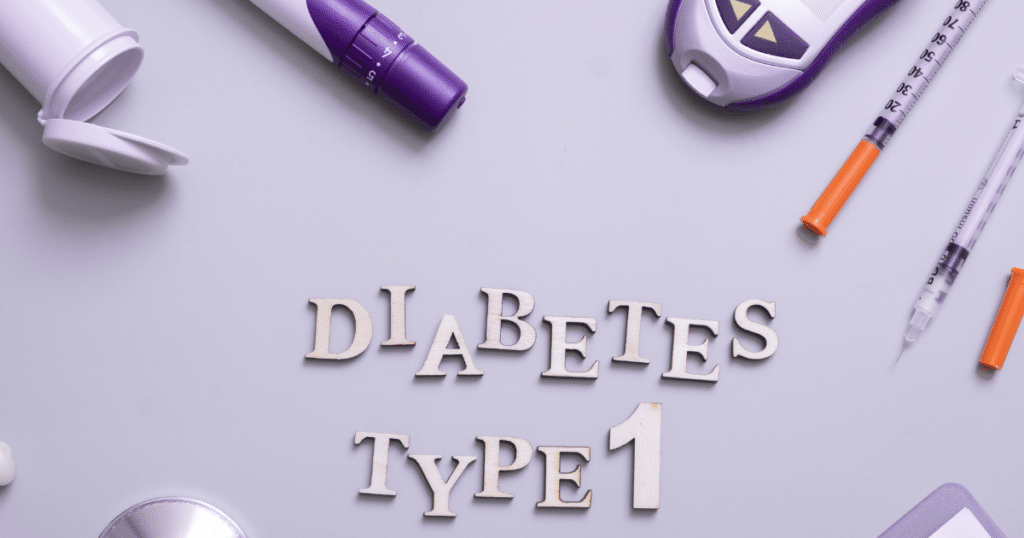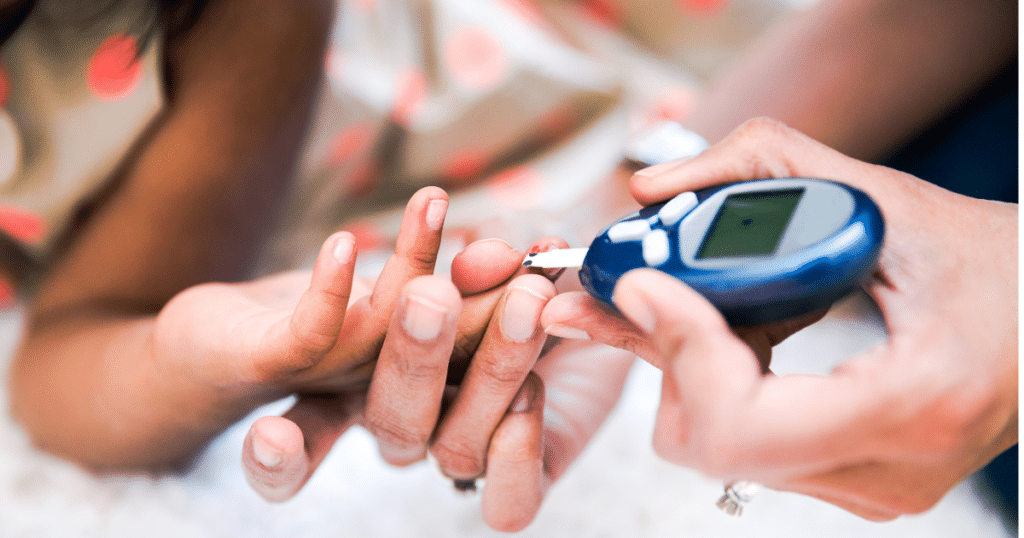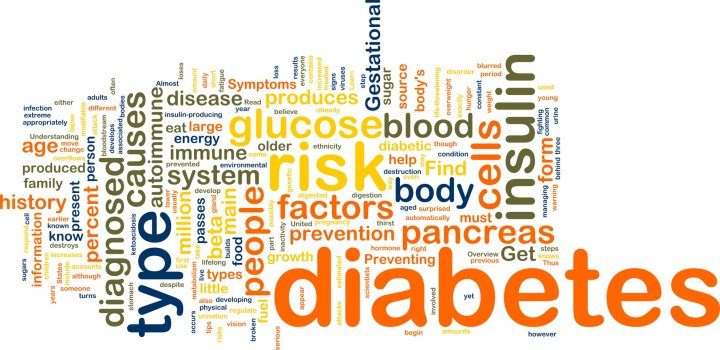New Way to Combat Muscle Loss Due to Type 1 Diabetes
Those suffering from Type 1 diabetes know first-hand the effects the disease has on skeletal muscle. Studies have shown that due to the loss of muscle stem cells from the early stages of the disease, that down the road almost all those suffering will eventually find themselves losing some muscle. Researchers wanted to figure out if there is a way to stop or prevent this from happening.
The following study shows what took place and how they plan on sparing muscle loss for those with Type 1 diabetes.
Disclaimer: This article is for informational purposes only and is not meant to treat or diagnose any condition. It is recommended that you speak with your doctor before starting any exercise program, changing your daily nutrition, or adding any supplements to your regimen.
Table of contents

What is Type 1 Diabetes?
Type 1 diabetes is a chronic medical condition in which the pancreas produces little to no insulin. Insulin is a hormone that allows glucose (sugar) to enter cells and be used for energy. Without sufficient insulin, glucose remains in the bloodstream, leading to high blood sugar levels.
Here are the key points about Type 1 diabetes:
Causes
- Autoimmune Reaction: The body’s immune system mistakenly attacks and destroys the insulin-producing beta cells in the pancreas.
- Genetic Factors: Certain genetic predispositions increase the risk.
- Environmental Factors: Potential triggers include viruses and other environmental factors, although the exact cause is not fully understood.
Symptoms
- Increased Thirst: Excessive thirst and frequent urination.
- Hunger: Increased hunger, even after eating.
- Weight Loss: Unintended weight loss.
- Fatigue: Feeling very tired and weak.
- Blurred Vision: High blood sugar levels can cause fluid to be pulled from the lenses of the eyes, affecting vision.
- Slow Healing: Cuts and bruises that are slow to heal.
- Frequent Infections: More susceptible to infections, especially of the gums, skin, and vaginal area.
Diagnosis
- Blood Tests: Measuring blood sugar levels through tests like fasting blood sugar, hemoglobin A1c, and random blood sugar tests.
- Autoantibody Tests: Identifying specific autoantibodies that are common in Type 1 diabetes.
- C-Peptide Test: Measuring C-peptide levels to determine how much insulin is being produced.
Management
- Insulin Therapy: Regular insulin injections or the use of an insulin pump.
- Blood Sugar Monitoring: Frequent monitoring of blood sugar levels to maintain them within a target range.
- Diet and Exercise: A balanced diet and regular physical activity are important to help manage blood sugar levels.
- Education and Support: Ongoing education about managing the condition and access to support groups and healthcare professionals.
Complications
If not well managed, Type 1 diabetes can lead to complications such as:
- Cardiovascular Disease: Increased risk of heart disease and stroke.
- Nerve Damage: Neuropathy, which can cause pain and numbness.
- Kidney Damage: Nephropathy, potentially leading to kidney failure.
- Eye Damage: Retinopathy, which can cause blindness.
- Foot Problems: Poor blood flow and nerve damage can lead to severe foot infections and even amputation.
How Does Type 1 Diabetes Cause Muscle Loss?

Type 1 diabetes can lead to muscle loss through several mechanisms primarily related to insufficient insulin levels and poor blood sugar control. Here’s a detailed explanation:
Mechanisms of Muscle Loss in Type 1 Diabetes
- Insulin Deficiency:
- Insulin’s Role: Insulin is crucial for glucose uptake into cells, including muscle cells. It also has anabolic effects, promoting protein synthesis and inhibiting protein breakdown.
- Lack of Insulin: In Type 1 diabetes, the lack of insulin means glucose cannot efficiently enter muscle cells, depriving them of the energy needed for maintenance and growth. Additionally, without insulin’s anabolic effect, muscle protein synthesis is reduced, and protein breakdown is increased.
- Hyperglycemia and Energy Imbalance:
- Glucose Utilization: Chronic high blood sugar (hyperglycemia) means glucose remains in the bloodstream instead of being used for energy. The body compensates by breaking down fat and muscle proteins to produce energy.
- Increased Catabolism: The body may enter a catabolic state, breaking down muscle proteins into amino acids for gluconeogenesis (the production of glucose from non-carbohydrate sources), exacerbating muscle loss.
- Nutrient Deficiency:
- Nutrient Absorption: Poorly managed diabetes can lead to nutrient deficiencies because of frequent urination (polyuria), which can cause loss of essential nutrients.
- Malnutrition: High blood sugar levels can also reduce appetite and cause weight loss, including muscle mass loss.
- Inflammation and Stress:
- Chronic Inflammation: Type 1 diabetes can lead to chronic inflammation, which promotes muscle protein breakdown.
- Hormonal Stress: High levels of stress hormones like cortisol, which can be elevated in poorly managed diabetes, also contribute to muscle protein breakdown.
- Diabetic Neuropathy:
- Nerve Damage: Diabetic neuropathy, or nerve damage caused by prolonged high blood sugar levels, can lead to muscle wasting, especially in the limbs. The lack of proper nerve signals to muscles can result in decreased muscle function and mass.
Preventing Muscle Loss
- Optimal Blood Sugar Control:
- Insulin Therapy: Maintaining appropriate insulin levels through regular injections or an insulin pump.
- Continuous Monitoring: Regular blood sugar monitoring to keep levels within the target range.
- Balanced Diet:
- Adequate Protein Intake: Ensuring sufficient protein intake to support muscle repair and growth.
- Nutrient-Rich Foods: Consuming a balanced diet rich in vitamins and minerals to prevent deficiencies.
- Regular Physical Activity:
- Strength Training: Engaging in resistance exercises to build and maintain muscle mass.
- Aerobic Exercise: Including aerobic activities to improve overall metabolic health.
- Medical Management:
- Regular Check-Ups: Regular visits to healthcare providers to monitor and manage potential complications.
- Addressing Complications: Proactively managing complications like neuropathy and inflammation.
- Stress Management:
- Reducing Stress: Employing techniques such as mindfulness, yoga, and adequate rest to reduce stress hormone levels.
By understanding these mechanisms and taking proactive steps in managing Type 1 diabetes, individuals can minimize muscle loss and maintain better overall health.
Put Up a Fight Against Type 1 Diabetes

Being that there is no cure for Type 1 diabetes, McMaster University researchers were trying to better understand what happens inside the body that causes the deterioration of skeletal muscle. This autoimmune disease generally is found in individuals who are in the early years of childhood and adolescence. In order to treat the disease, the individual will need to give themselves insulin injections throughout the rest of their life in order to manage their blood glucose levels.
Usually, a parent or guardian needs to give the child injections until they are responsible enough or know how and are able to inject themselves with insulin without potentially doing harm to their body.
Related Article: Muscle Memory is a Thing?
One researcher stated that “through research with both mice and humans, we’ve shown that Type 1 diabetes negatively impacts muscle, and by improving muscle health we can reduce blood sugar levels and improve the response to insulin.” The team of researchers noticed that in order to preserve muscle, they would need to reduce the hormone myostatin which is naturally secreted by the body. Reduce myostatin, reduce muscle loss.
Interestingly enough, through their research, they noticed that by reducing myostatin, the muscle was much more sensitive to insulin and better able to deal with glucose even without insulin being injected and additionally showed an overall decrease in blood sugar levels.
From this research they have stated that there are pharmaceutical companies who are very close to releasing a drug with minimal side effects that has the ability to inhibit myostatin. Researchers are not dismissing the fact that those with Type 1 diabetes should be exercising in order to help maintain their lean muscle mass. One of the researchers even said, “While my advice would be to exercise, our work may provide therapeutic options for those who may be unable to, or unable to at intensities needed to see therapeutic benefit.”

On average, research has shown that those suffering from Type 1 diabetes have a lifespan around 15 years shorter than those without the disease. Generally, this is due to complications from the disease such as kidney failure, stroke, and heart attack. A researcher went on to say, “Our findings provide solid evidence that Type 1 diabetes negatively affects muscle and that correcting these changes would improve our physical abilities and our whole body metabolism, ultimately increasing the healthy lifespan of those suffering from this chronic disease.”
At the end of the day, it seems like help is on the way for those suffering from muscle loss from this disease. If they are able to reduce myostatin through these new pharmaceutical drugs soon to be released, they will be able to preserve muscle and help regulate blood sugar.
Sources:
1. Samantha K. Coleman, Irena A. Rebalka, Donna M. D’Souza, Namita Deodhare, Eric M. Desjardins, Thomas J. Hawke. Myostatin inhibition therapy for insulin-deficient type 1 diabetes. Scientific Reports, 2016; 6: 32495 DOI: 10.1038/srep32495
2. Donna M. D’Souza, Sarah Zhou, Irena A. Rebalka, Blair MacDonald, Jasmin Moradi, Matthew P. Krause, Dhuha Al-Sajee, Zubin Punthakee, Mark A. Tarnopolsky, Thomas J. Hawke. Decreased Satellite Cell Number and Function in Humans and Mice With Type 1 Diabetes Mellitus is the Result of Altered Notch Signaling. Diabetes, 2016; db151577 DOI: 10.2337/db15-1577


*Disclosure: This article may contain affiliate links or ads, which means we earn a small commission at no extra cost to you if you make a purchase through these links. These commissions help support the operation and maintenance of our website, allowing us to continue producing free valuable content. Your support is genuinely appreciated, whether you choose to use our links or not. Thank you for being a part of our community and enjoying our content.
PLEASE CONSIDER SHARING THIS ON YOUR SOCIAL MEDIA TO HELP OTHERS LEARN MORE ABOUT THIS TOPIC.





